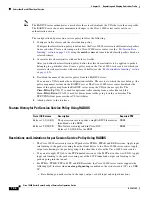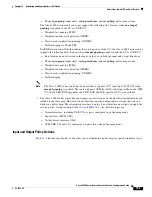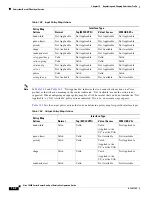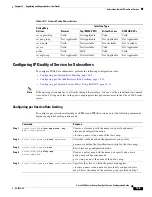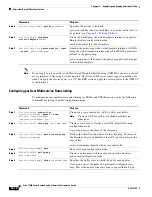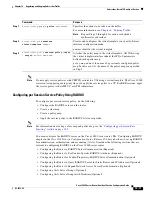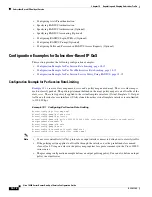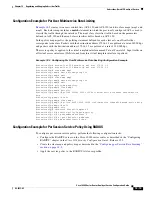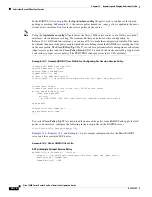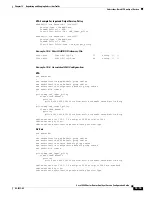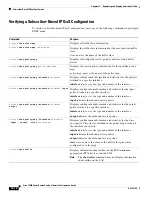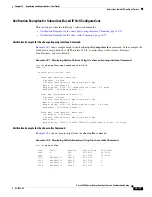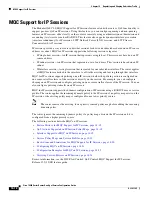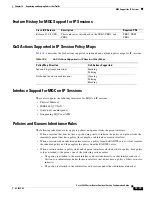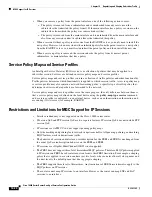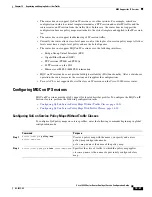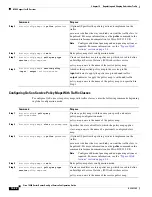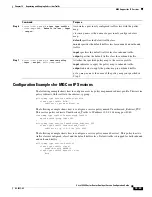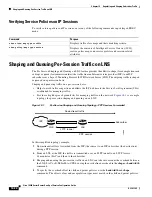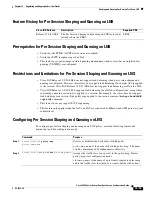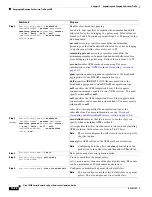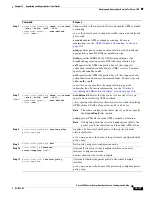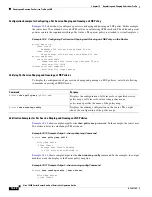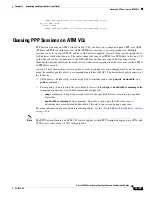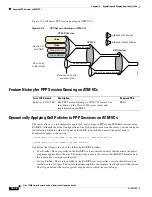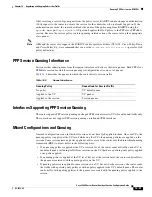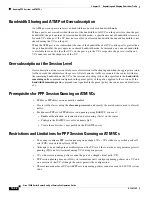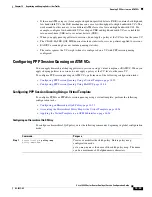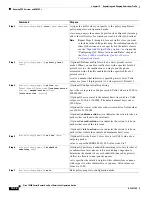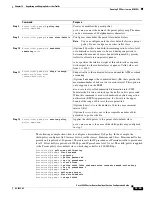
18-20
Cisco 10000 Series Router Quality of Service Configuration Guide
OL-7433-09
Chapter 18 Regulating and Shaping Subscriber Traffic
MQC Support for IP Sessions
•
When you remove a policy from the parent interface, one of the following actions occurs:
–
The policy is removed from a subinterface and is uninherited from any sessions on the
subinterface that inherited the policy from it. If the main interface has a policy, sessions on the
subinterface from which the policy was removed inherit that.
–
The policy is removed from the main interface and is uninherited from the main interface and
also from any sessions under its subinterfaces that inherited this policy.
•
When a session without a policy receives one from the RADIUS server, you only need to install the
new policy. However, when a session with an inherited policy from the parent receives a new policy
from the RADIUS server, you must first uninherit the parent policy and then install the new one.
•
When a session policy is removed, the session inherits the policy from its nearest parent,
subinterface, or main interface that has a policy.
Service Policy Maps and Service Profiles
An Intelligent Service Gateway (ISG) service is a collection of policies that may be applied to a
subscriber session. Services are defined in service policy maps and service profiles.
Service policy maps and service profiles contain a collection of traffic policies and other functionality.
Traffic policies determine which functionality is applied to which session traffic. A service policy map
or service profile may also contain a network-forwarding policy, a specific type of traffic policy that
determines how session data packets are forwarded to the network.
Service policy maps and service profiles serve the same purpose; the only difference between them is
that a service policy map is defined on the local device using the
policy-map type service
command,
and a service profile is configured on an external device, such as an authentication, authorization, and
accounting (AAA) server (for example, RADIUS).
Restrictions and Limitations for MQC Support for IP Sessions
•
Interface redundancy is not supported on the Cisco 10000 series router.
•
IP session QoS and PPP session QoS are two separate features. IP session QoS does not include PPP
session QoS.
•
IP sessions over ATM VCs do not support queuing policy maps.
•
Only the marking and policing features work in upstream traffic. All queuing, policing, and marking
MQC features work in downstream traffic.
•
The behavior of session and interface oversubscription for the PRE2 and PRE3 is unchanged from
the usual QoS oversubscription behavior on the PRE2 and PRE3.
•
IP sessions over Gigabit EtherChannel (GEC) is not supported.
•
The PRE2 does not support three-level hierarchical MQC policies. Therefore, MQC policies applied
to IP sessions on PRE2-based routers must conform to this PRE2 limitation. For example, a shaping
policy that is applied to a session can have just two levels, where one level has all class queues and
the next level is the default queue that does aggregate shaping.
•
The PRE3 supports three levels of hierarchies. Any limitations of PRE3 hierarchies also apply to the
MQC policies on IP sessions.
•
The router cannot map IP sessions to an interface. However, the router can map LNS and LAC
sessions to an interface.

